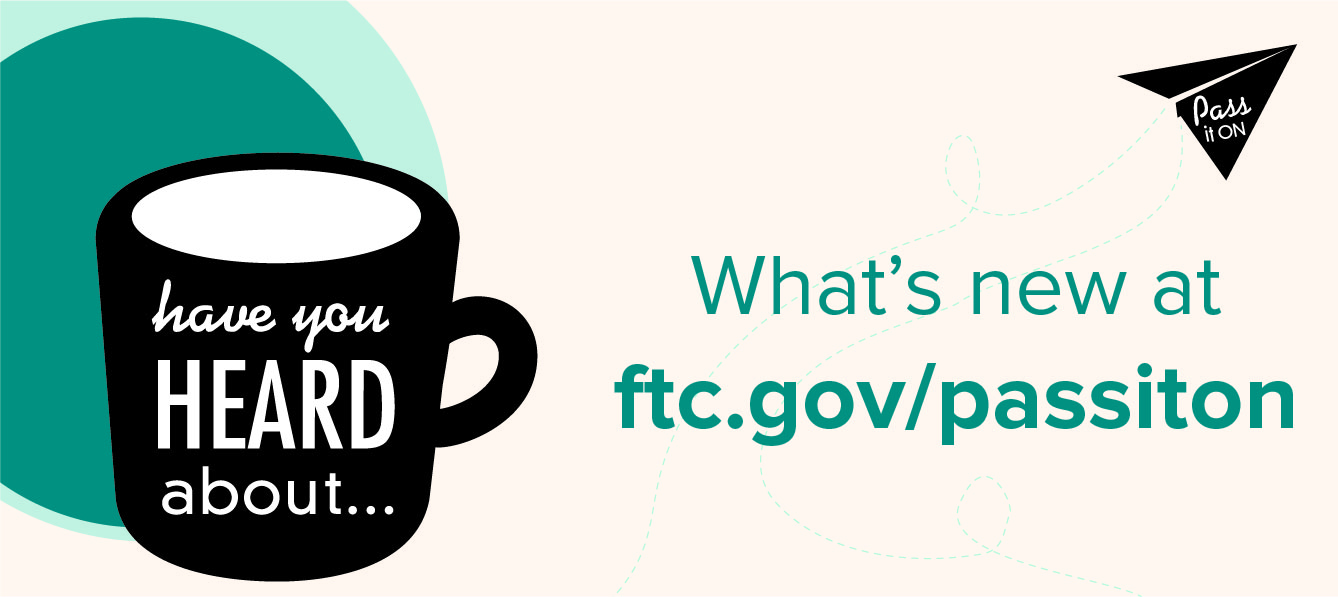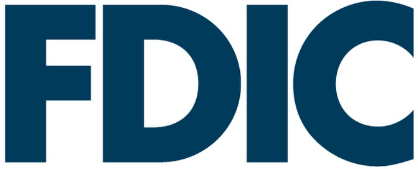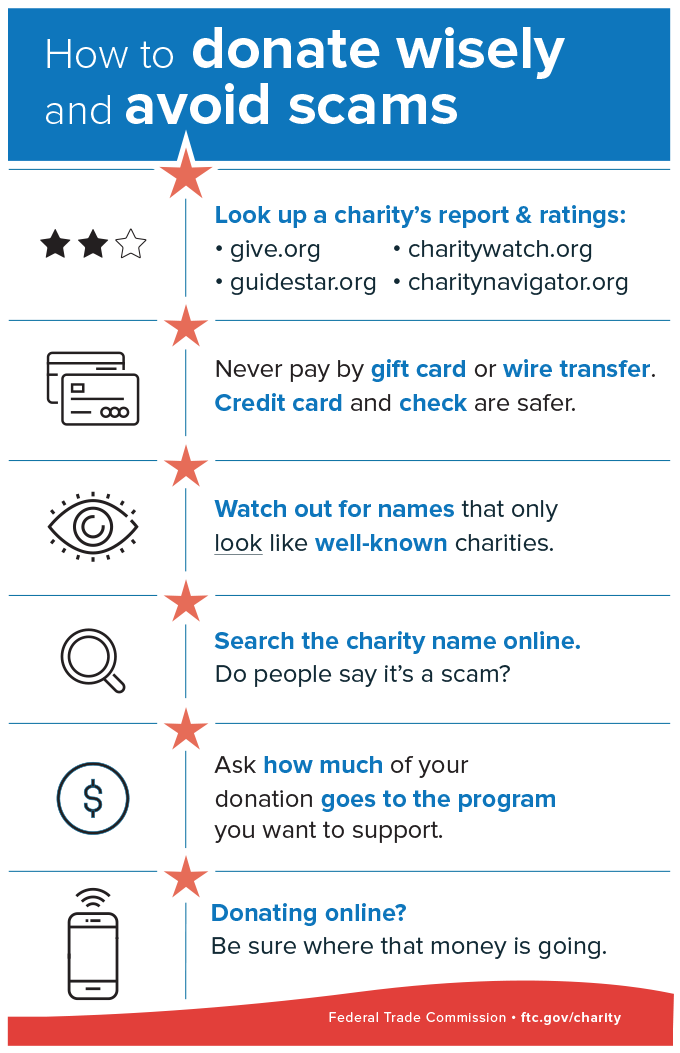Source: Federal Trade Commission: Consumer Information
Holidays often mean time with family and friends. If you’re looking for conversation starters that avoid tricky topics – like who should’ve won the World Series – why not chat about scams? Pass it On, an FTC education campaign, gives you new ways to talk about scams and how to prevent them.
Sharing what you know can protect someone who you know from a scam. That’s why the FTC created Pass it On – articles, presentations, bookmarks, activities and videos – to get you talking about scams. Now, Pass it On has an updated website with four new topics. Here’s a glimpse:
Maybe your retired aunt is looking for ways to make extra money and saw ads promising big money working at home – for a fee. Remind her to check out the company first and share this advice about work-at-home scams: don’t pay money to earn money.
Commiserating about leaky roofs, old windows, or repairing a home after storm damage? Be sure to discuss home repairs scams. Before starting repairs, get three written estimates and proof of license and insurance.
If you want folks to kvetch about something other than why kids don’t eat their vegetables, bring up unwanted calls. We all get them and many are from scammers. Remind people to just hang up and don’t trust caller ID. It can be faked. Ask your carrier about call blocking – or consider buying a call blocking device as a holiday gift.
Or maybe you prefer a little friendly competition? Quiz your friends and family about what a money mule is. Not sure yourself? The short answer is: when someone sends you money and asks you to send it on to someone else, you could be what law enforcement calls a money mule. Don’t do it. You could lose money and get into legal trouble.

This year, when you pass the turkey, pass on your knowledge about scams. And if you know someone who’s alone this holiday season, reach out to them too. You’ll probably brighten their day and may even help prevent a scam.






